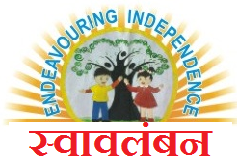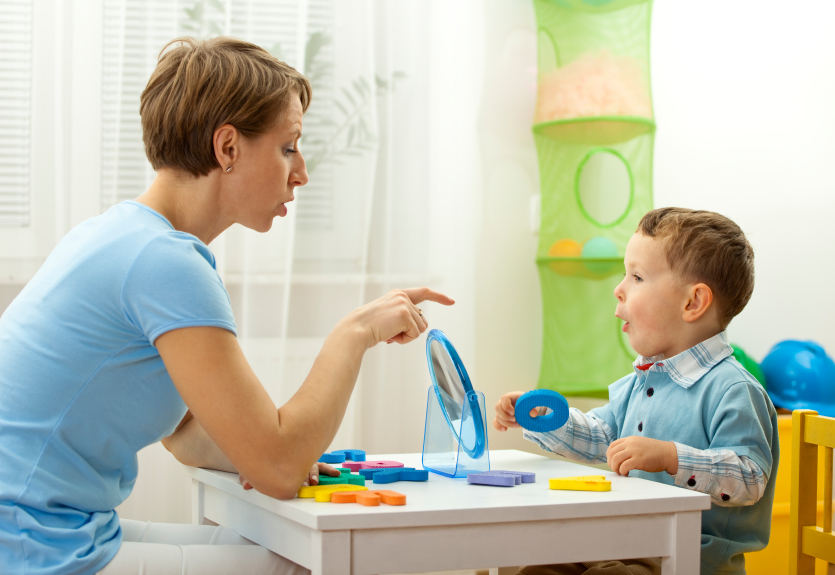Receptive Language:
They listen to the speech of those close to them, and startle or cry if there is an unexpected noise. Loud noises wake them, and they become “still” in response to new sounds.
0-3 months: babies learn to turn to you when you speak, and smile when they hear your voice. In fact, they seem to recognise your familiar voice, and will quieter at the sound of it if they are crying. Tiny babies under three months will also stop their activity and attend closely to the sound of an unfamiliar voice. They will often respond to comforting tones whether the voice is familiar or not.
4-6 months: between 4 to 6 months babies respond to the word “no”. They are also responsive to changes in your tone of voice, and to sounds other than speech. For example, they can be fascinated by toys and other objects that make sounds, enjoy music and rhythm, and look in an interested or apprehensive way for the source of all sorts of new sounds such as the toaster, birdsong, the clip-clop of horses’ hooves or the whirr of machines.
7-12 months: the baby now obviously listens when spoken to, turns and looks at your face when called by name, he or she recognizes the names of familiar objects (“Daddy”, “car”, “eyes”, “phone”, “key”) and begins to respond to requests (“Give it to Granny”) and questions (“More juice?”).
Now your child points to pictures in a book and can point to a few body parts when asked (nose, eyes, tummy).He or she can also follow simple commands and understand simple questions, now likes listening to simple stories and enjoys it when you sing songs or say rhymes. This is a stage in which he or she will want the same story, rhyme or game repeated many times.
2-3 years: By now toddler will understand two stage commands (“Get your socks and put them in the basket”) and understand contrasting concepts or meanings like hot / cold, stop / go, in / on and nice He or she notices sounds like the telephone or doorbell ringing and may point or become excited, get you to answer, or attempt to answer themselves.
3-4 years: understands simple “Who?”, “What?” and “Where?” questions, and can hear you when you call from another room. This is an age where hearing difficulties may become evident.
4 – 5 Years : Children in this age range enjoy stories and can answer simple questions about them. He or she hears and understands nearly everything that is said (within reason) at home or at pre-school or day care.
Expressive Language
0-3 months baby smiles at you when you come into view. He or she repeats the same sound a lot and “coos and goos” when content. Cries “differentiate”. That means, the baby uses a different cry for different situations. For example, one cry says “I’m hungry” and another says “I have a pain”.
4-6 months: Gurgling sounds or “vocal play” occur while you are playing with your baby or when they are occupying themselves happily.Babbling really gets going in this age range, and your baby will sometimes sound as though he or she is “talking”.This “speech-like” babbling includes many sounds including the bilabial (two lip) sounds “p”, “b”, “w” and “m”.Your baby can tell you, using sounds or gestures that they want something, or want you to do something. He or she can make very “urgent” noises to spur you into action.
7-12 months:The sound of baby’s babbling changes because it now includes more consonants, as well as long and short vowels. He or she uses speech or other sounds (i.e., other than crying) in order to get your attention and hold on to it. And your baby’s first words (probably not spoken very clearly) have appeared! (“MaMa”, “Doggie”, “Night Night”, “Bye Bye”, “No”)
1-2 years: baby is accumulating more words as each month passes. He or she will even ask 2-word questions like “Where ball?” “What’s that?” “More chippies?” “What that?”, and combine two words in other ways to make the sentences (“More push”). Words are becoming clearer as more initial consonants are used.
2-3 Years: He or she seems to have a word for almost everything. Utterances are usually one, two or three words long and family members can usually understand them.Your toddler may ask for, or draw your attention to something by naming it (“Elephant”) or one of its attributes (“Big!”) or by commenting (“Wow!”).
3-4 years: Sentences are becoming longer as your child can combine four or more words. He or she talks about things that have happened away from home, and is interested in talking about pre-school, friends, outings and interesting experiences. Speech is usually fluent and clear and “other people” can understand what your child is saying most of the time. In fact, sometimes “other people” hear things you wish they had not!
|
Speech and language milestones |
||
| Receptive language |
Expressive language |
|
| Babies less than 1 month old: |
|
|
| 1- to 4-month-old babies: |
|
|
| 5- to 6-month-olds: |
|
|
| 7- to 9-month-olds: |
|
|
| 10- to 12-month-olds: |
|
|

